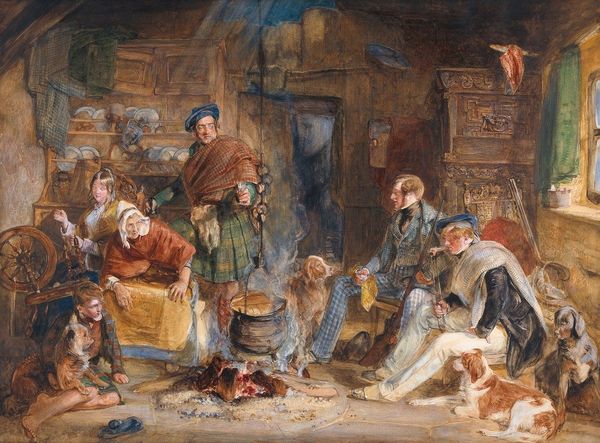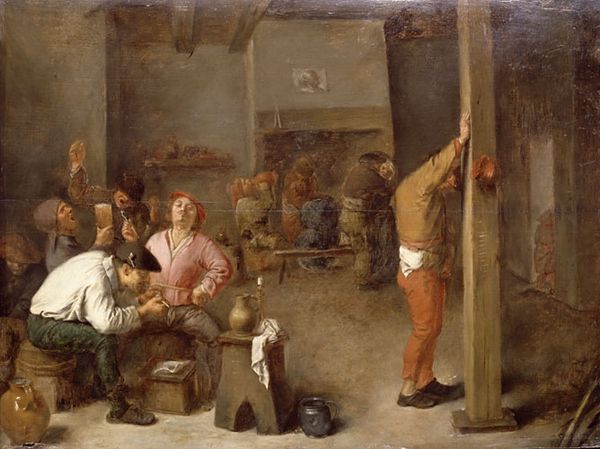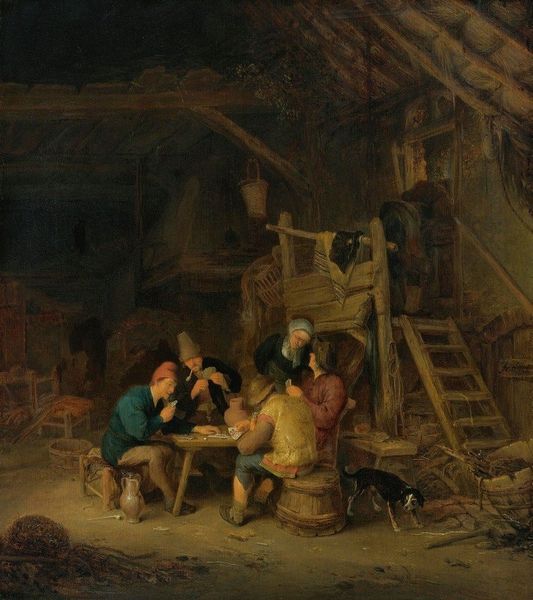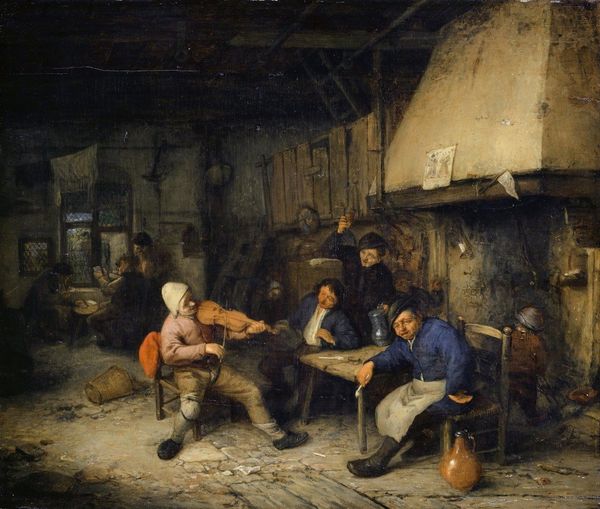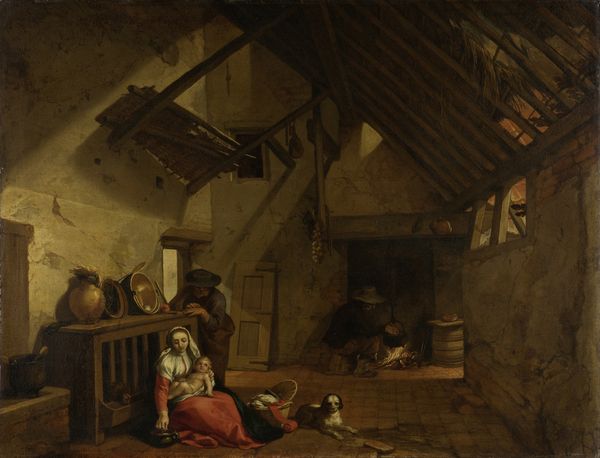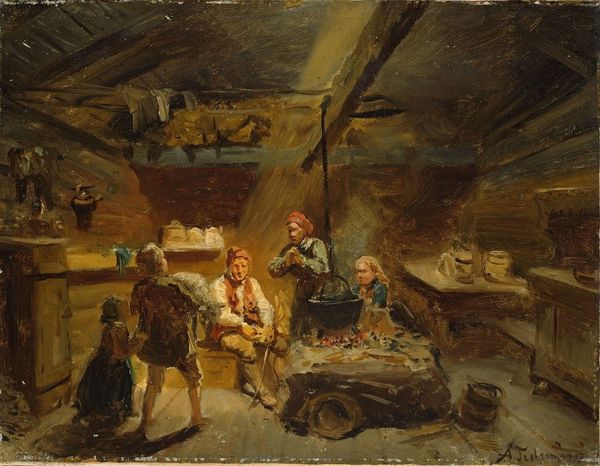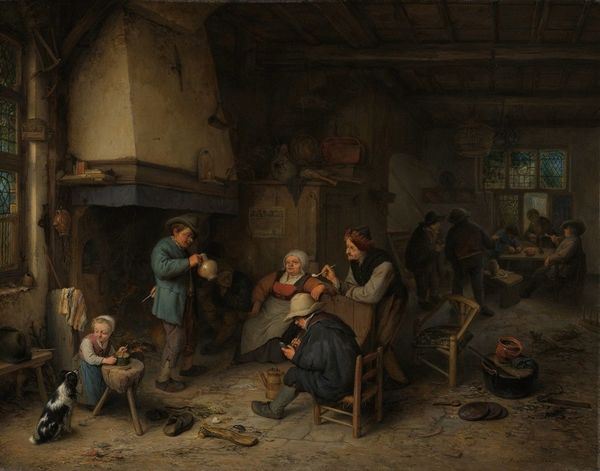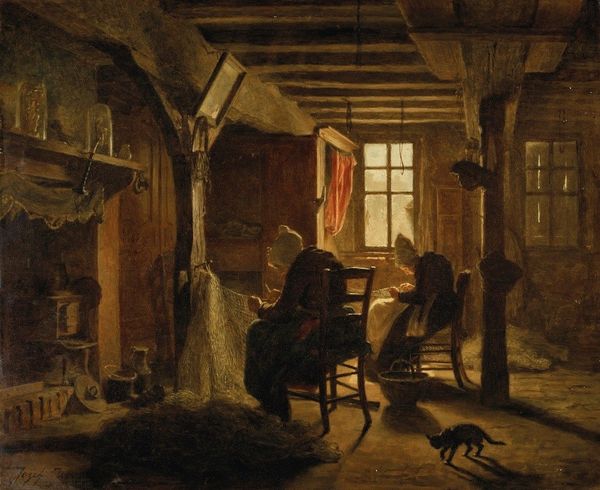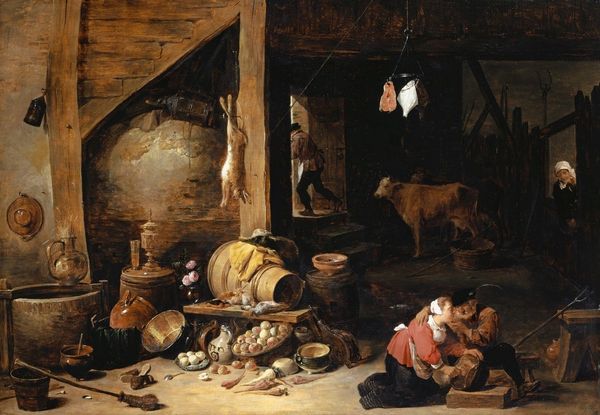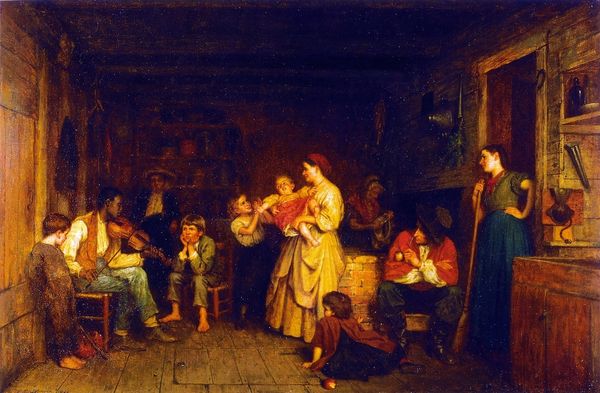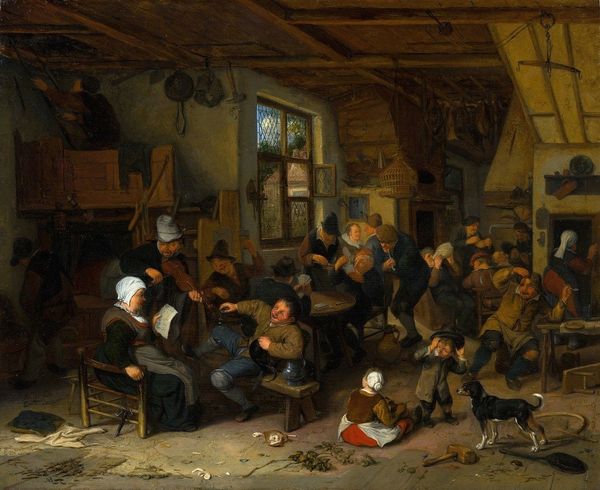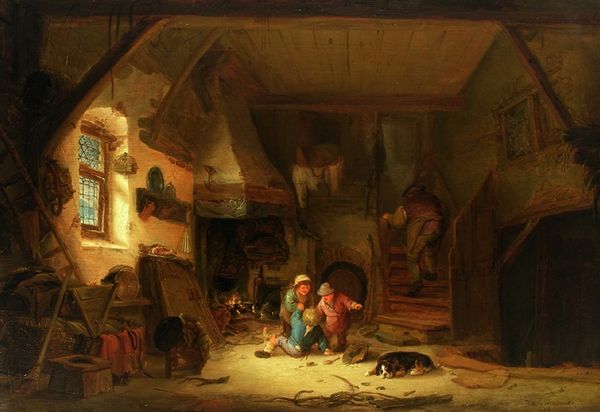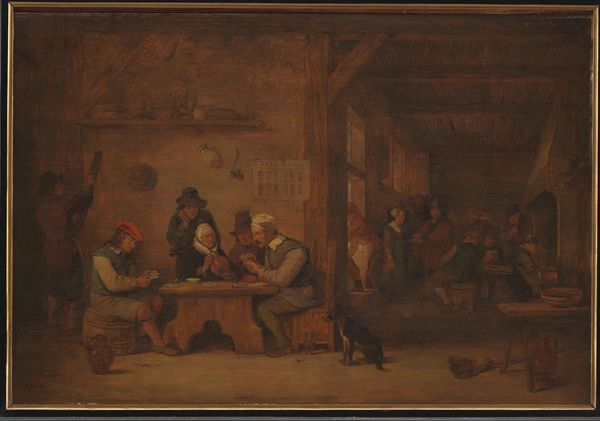
Dimensions: support: 302 x 457 mm
Copyright: CC-BY-NC-ND 4.0 DEED, Photo: Tate
Curator: Sir David Wilkie's "Study for 'Blind Man's Buff'" at the Tate, presents a boisterous scene in oil on canvas, capturing a moment of frenetic energy. Editor: It’s chaotic! The eye struggles to find a resting point amidst the flurry of limbs and the earthy palette. Curator: Indeed. Wilkie, active in the early 19th century, often depicted scenes of everyday life, and this preliminary study offers insight into his process. Consider the labor involved in depicting these social gatherings with such detail. Editor: The composition, though, is carefully constructed chaos. The strong diagonal lines of the room lead the eye into the heart of the game, a sophisticated organizational strategy. Curator: Exactly, and his work reflected the evolving social fabric of his time, catering to a growing middle class eager for relatable subjects. It hints to the material conditions of play. Editor: I see it now, there's a real tension between the formal structure and the raw energy it captures. It is a fleeting moment, frozen in time. Curator: Precisely. It encourages us to think about the historical context. Editor: And appreciate the artist's eye for capturing such a dynamic scene.
Comments
tate 7 months ago
⋮
http://www.tate.org.uk/art/artworks/wilkie-study-for-blind-mans-buff-n00921
Join the conversation
Join millions of artists and users on Artera today and experience the ultimate creative platform.
tate 7 months ago
⋮
Wilkie studied in Edinburgh and came to London in 1805. A very gifted artist, he soon found fame as a painter of low-life subjects. These small works, the action in which was shown at a carefully chosen moment, with gesture and expression telling the whole story, brought an exciting new note into British art. They had the truth and humour of Hogarth and showed an acute sense of the lessons to be learnt from the Old Masters, particularly the Dutch Old Masters; importantly, their spirit was 'national'. In fact, Wilkie's style matched the aspirations of most of the patrons and many of the artists of the day.This is a study for a larger picture painted for the Prince Regent in 1812. Gallery label, August 2004
